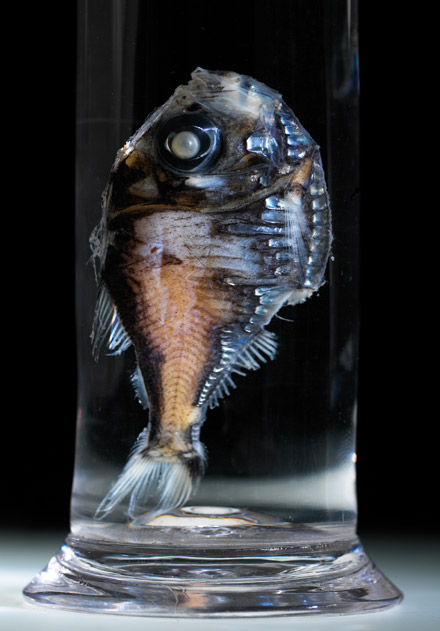 New Zealand hatchetfish
New Zealand hatchetfish
TLF ID R6869
This is a colour photograph of a New Zealand hatchetfish ('Polyipnus kiwiensis') in a transparent container. The organs responsible for bioluminescence are visible against the black background. The keel-shaped abdomen of the hatchetfish can also be seen.
